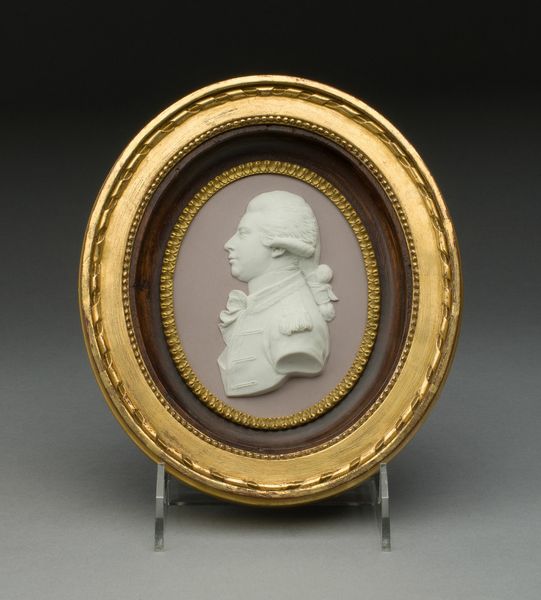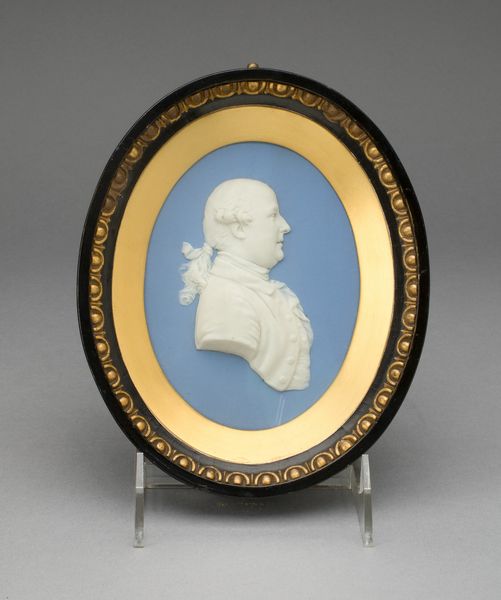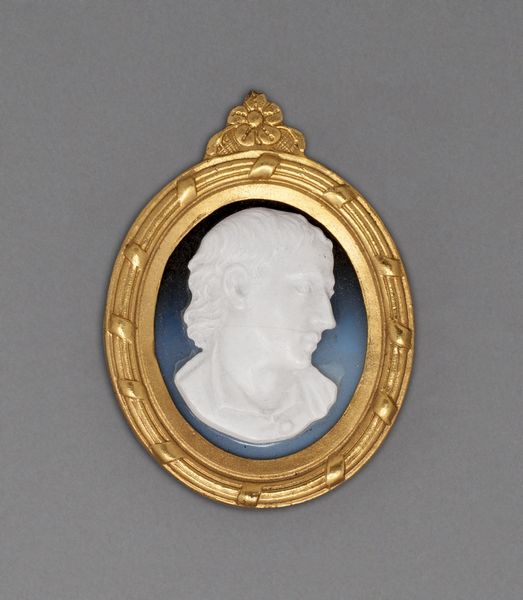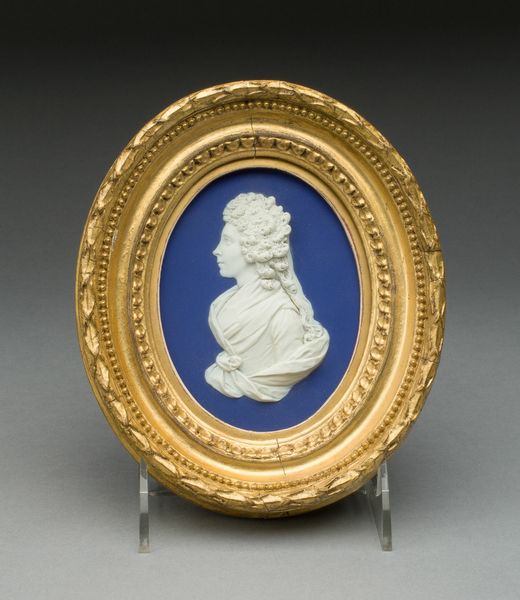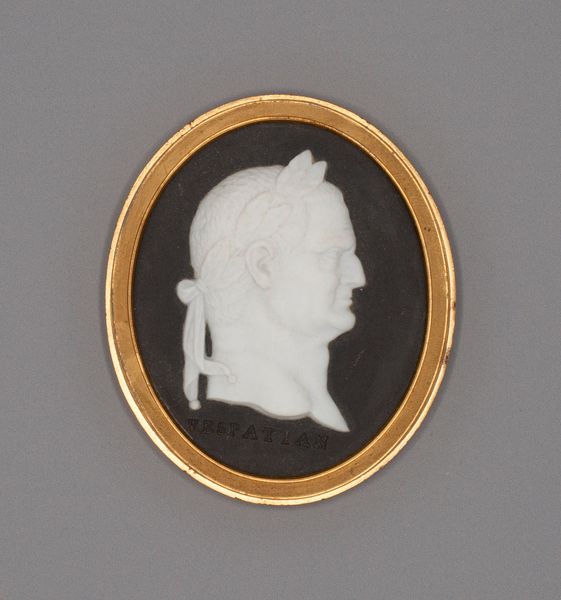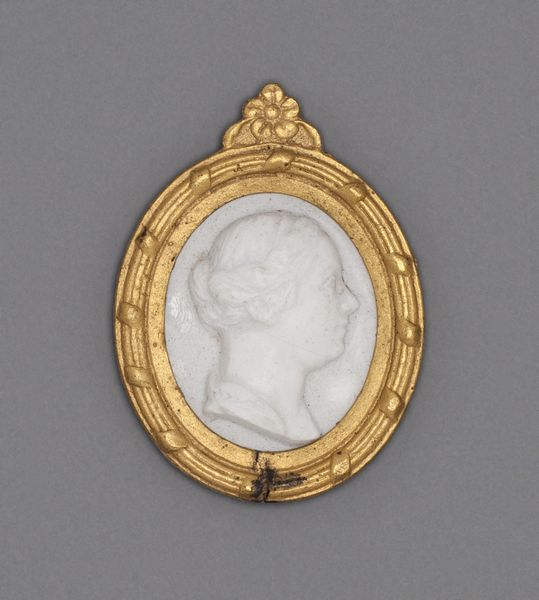
relief, ceramic, sculpture
#
portrait
#
neoclacissism
#
greek-and-roman-art
#
relief
#
ceramic
#
sculptural image
#
sculpture
#
decorative-art
Dimensions: 12.1 × 8.6 × 2.4 cm (4 3/4 × 3 3/8 × 15/16 in.)
Copyright: Public Domain
Curator: Here we have a plaque crafted around 1770 by the Wedgwood Manufactory, currently held at the Art Institute of Chicago. It's titled "Plaque with Head of a Satyr." Editor: Immediately, I'm drawn to the contrasting colors—the pale, almost ethereal white figure against the Wedgwood blue background. It creates a striking visual tension, doesn't it? Curator: It does. Wedgwood was masterful at using color to evoke certain moods. The choice here reflects the era’s obsession with classical antiquity and a sanitized, idealized version of pagan figures like satyrs. These figures often get romanticized, removing any nuance or connection to historic violence and the concept of conquest and forced enslavement associated with them. Editor: Interesting. So, this idealized version—notice the incredibly fine detail in the satyr's hair and beard. The relief is shallow, yet there's a remarkable sense of depth achieved through delicate modeling. How would you describe its formal characteristics? Curator: The clean lines and balanced composition speak directly to Neoclassical principles. The oval shape of the plaque itself provides a contained, harmonious structure for the figure. Its placement suggests careful consideration of classical aesthetic values such as order and clarity, with the work seemingly emulating Greco-Roman relief sculpture, and playing to the cultural narratives and history. Editor: Considering its size and the fineness of the detail, this was likely intended for a wealthy clientele. Do you think the market changed anything for depictions of figures of Greek and Roman art and mythology? Curator: Definitely, in the late 18th century there was an increased appetite for this kind of high craftsmanship art. This piece demonstrates Wedgwood’s ability to democratize the classical aesthetic, by selling an image of a satyr that at once maintains its original themes and changes to meet societal constraints and preferences. This adds a layer to our experience with the relief, beyond just aesthetics. Editor: It certainly does change the way one sees it. So it's not simply a pretty face but one burdened by historical implication. The cool formality now feels less detached, more a mask or presentation hiding the inherent biases it implies. Thank you. Curator: My pleasure. I hope it's given you a wider context, so next time you consider this image you can appreciate its complex significance within both art history and our contemporary moment.
Comments
No comments
Be the first to comment and join the conversation on the ultimate creative platform.

